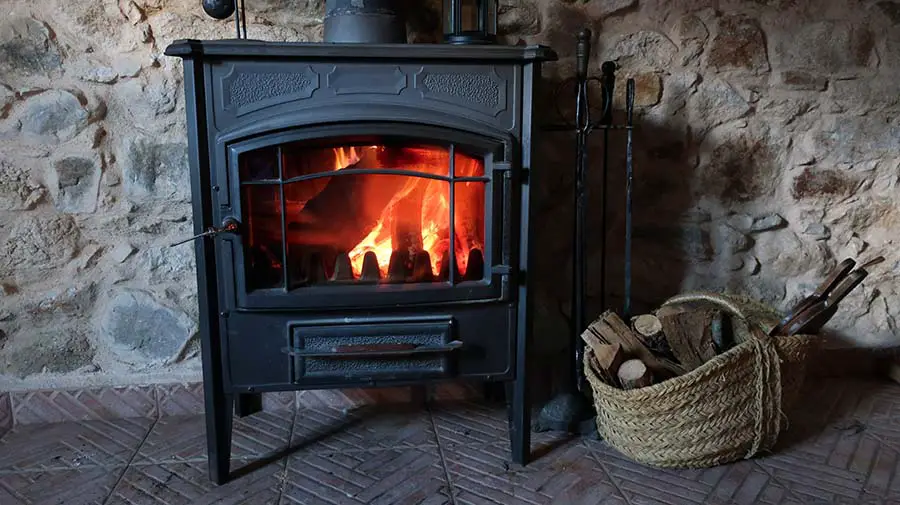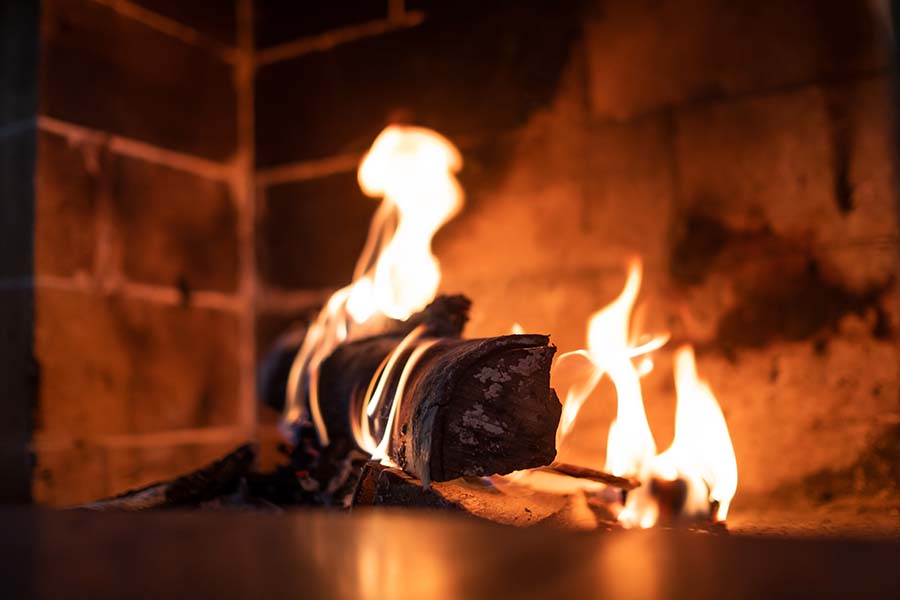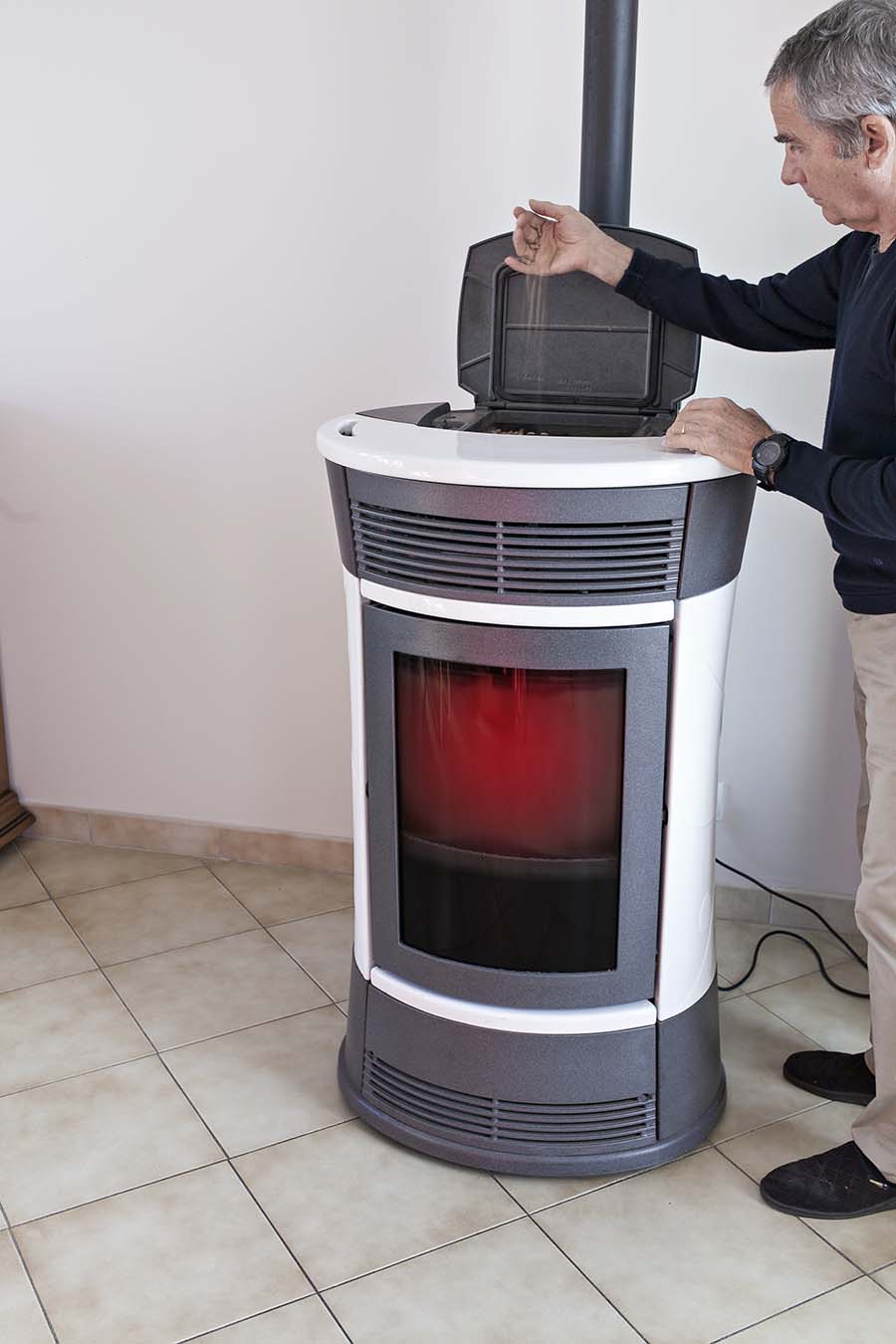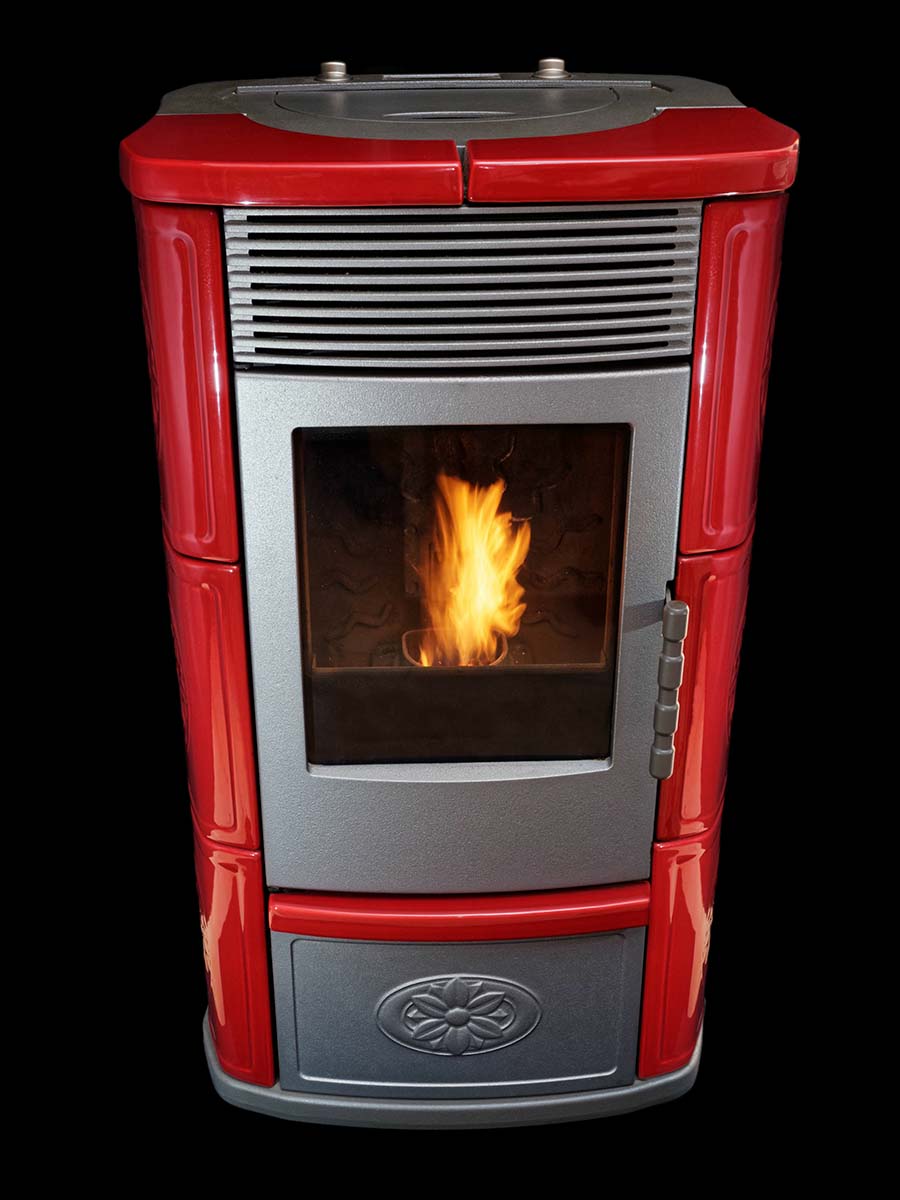- Pellet stoves are not required to have a chimney but do require venting. They can be vented through a sidewall.
- This gives you more control over the installation process and reduces installation costs.
- Pellet stoves don’t require a vertical exhaust vent and can be safely run on a horizontal exhaust because it has a forced exhaust system
- They do, however, require proper exhaust, ventilation and spacing from walls and furniture for safe use (Source)
- Watch the video below for a full demonstration on venting a pellet stove
Contents
Understanding Pellet Stove Ventilation Requirements
The video above will provide a venting demonstration; discuss types and kinds of venting for biomass, corn, and pellet-burning stoves and appliances.
Similar to a traditional fireplace or wood stove, a pellet stove performs the same functions.
They add coziness and comfort to a home and its surroundings.
To ensure that the heat is evenly distributed, it must be placed strategically in the room where it can be an effective heat source.

The flue and air intake ducts must be connected when installing a pellet stove. In addition to other considerations, a central location is ideal for a pellet stove because it allows the heat to be evenly distributed throughout the surrounding area.
Pellet stoves require a well-thought-out plan and several barriers to evenly distribute the heat throughout the house. Wood pellets are the fuel of choice for pellet stoves.
Sawmill byproducts such as these pellets are made from reclaimed sawdust and shavings.
Unlike rabbit food, wood pellets are inexpensive and easy to produce, making them environmentally friendly. Read on to know whether pellet stoves need a chimney.
Chimneys & Pellet Stoves
For the safe removal of stale air from a residence, a flue is required even if a chimney is not used with the pellet stoves.
There are two options for venting a pellet stove: through an open fireplace and using an existing chimney lined with a flue liner, or through an exterior wall.
Unlike wood-burning stoves, pellet stoves are electrical appliances that burn fuel to generate heat for a home. Still, they have several differences, and the most notable is that pellet stoves are not as efficient. However, installing any stove within an open fireplace has its advantages.
An associated chimney offers an existing means to deplete waste air from home without requiring anything much farther installed.
Traditional wood-burning stoves and burners are typically installed in a fireplace with a chimney or against a wall of the room with a direct flue route to the top of the property.
Smoke is expelled from the building through an exterior wall or an insulated flue that extends upward and out of a fireplace.
For the homeowner, this can be pretty restrictive or, in many cases, prohibitive. A single-story extension or a location where the flue doesn’t typically go is becoming more and more common as time goes on, as our lifestyles and fashions have evolved.
Pellet stoves and chimney fires

Fires caused by pellet stoves are rare compared to the frequency of fires caused by other types of heating.
However, occurrences of this nature are infrequent. A chimney fire is one of the less likely possibilities, but nothing is impossible.
Irregularly discarding hot ashes is the most common cause of a pellet stove fire. An air-tight metal container must be used for at least 24 hours to collect the ashes from the stove.
Once it’s completely cooled down, it can be disposed of in this manner. There are still a few hot embers left in the ash if you don’t wait for them to cool down.
Combustible materials accumulating too close to the exhaust vent can also start fires. Keep the vent free of obstructions at all times. Never place flammable objects near the vent, such as leaves.
There aren’t many creosote-producing residues left behind by pellet stoves. So, unlike wood stoves, they don’t require as much cleaning. However, they still need to be sanitized. It’s possible to have a chimney fire if you don’t perform regular cleanings or maintenance.
Installing a pellet stove
Before the machine is delivered to your home, you can have a hole cut in it by the dealer to address the venting issue. When hiring professional help, be sure to ask them to follow the manufacturer’s recommendations for proper ventilation.
It’s also important to follow any local laws. As long as you follow the installation instructions to the letter, this can help keep your house safe. Professional assistance is essential if this is your first time dealing with a pellet stove.
Activate the exhaust vents

In many cases, venting installation is one of the most exhausting parts of the installation process. The smooth installation of ventilation depends on meticulous planning. Ventilation can be accomplished by running the vent through the exterior wall.
If you have access to an exterior wall, another option is to extend the venting to the roof. You’ll get the best results if you hire a professional to install the pipes.
The wall should be at least three feet away.
At least one to two inches is a typical distance for a pellet stove from the back wall. Installing it closer to the wall is an option as well. The stove’s ventilation can be positioned to blow out the back. As a result, the ventilation is virtually undetectable.
Put in a fireplace pad

The hearth pad for your pellet stove must be fireproof. The concrete backer board can be used to make your hearth pad. If you’re not the DIY type, a hearth pad can be ordered online or from your stove supplier if you prefer not to do it yourself.
Refer to your product’s instruction manual
Ventilation must be set up correctly to avoid any problems. The use of a stud finder ensures that the hole will pass through the studs. A utility knife should always be used to cut through the interior drywall. To remove the outer part, use a saw to cut it out.
Can a pellet stove emit poisonous smoke?
Carbon monoxide poisoning is less likely to occur when using a pellet stove than when using a wood-burning stove.
Although pellet stoves can produce small amounts carbon monoxide from burning wood pellets, pellet stoves are efficient home heating appliances and burn fuel efficiently, keeping emissions low. A pellet stove should be paired with a carbon monoxide detector (Source).
In any case, carbon monoxide is produced by any stove that uses combustible fuel. Carbon monoxide poisoning is still a possibility as a result of this.
These basic safety rules apply to any fireplace or stove, so you should follow them. Maintain your pellet stove by cleaning and inspecting it regularly.
Install a carbon monoxide detector nearby so that you’ll know if there’s an issue at all times as well. Carbon monoxide poisoning is extremely dangerous, and it’s nearly impossible to detect on your own.
Conclusion
A thermostat is an option for controlling a pellet stove’s temperature. This model has extra-large hoppers, so you can rest easy and enjoy 65 hours of warm air with no interruptions. Start by dumping your pellets into the hopper and turning on the heater.
Since stove pellets don’t require a chimney to operate, the cost of both heating options is roughly the same.

